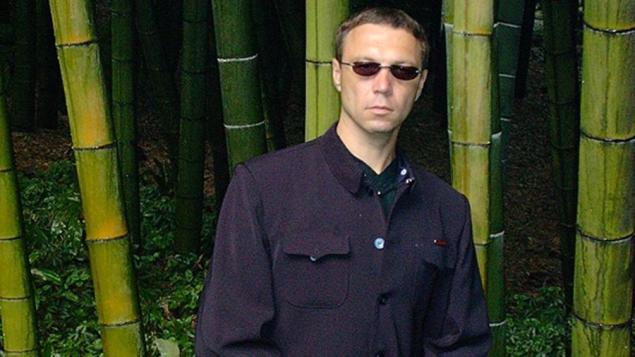162
Has Victor Pelevin become the tuning fork of our time?

Alleged photo of young Victor Pelevin without glasses
Viktor Olegovich Pelevin is one of the few modern Russian writers whose name has become a cultural code, a reference to a certain type of worldview. His work is a kind of philosophical compass, set to search for truth in the chaos of post-Soviet and post-modern reality. But is he the tuning fork of our time today, when the world has changed beyond recognition?
The Phenomenon of Early Pelevin: An Echo of Change
Early Pelevin really was an amazing literary phenomenon - a synthesis of the psychedelic realism of Carlos Castaneda, the fantastic worlds of the Strugatsky brothers, the depth of Venedikt Yerofeev and the magical realism of Gabriel García Marquez. He appeared on the literary scene at a time when post-Soviet consciousness was in a cultural and ideological vacuum. His early works resonated with the collective experiences of an entire generation caught between two eras.
“Omon Ra”, “The Life of Insects”, “The Recluse and the Sixfold” – these works were not just literature, but a kind of psychological tool that helps the reader to comprehend the absurdity of what is happening around. Pelevin did not so much describe reality as he dissected it, exposing the hidden mechanisms of mind manipulation.
1992
“Omon Ra” is the first novel that brought Pelevin wide fame. A grotesque satire on the Soviet space program and the totalitarian system.
1993
Insect Life is a metaphorical depiction of post-Soviet reality through the prism of human insect life.
1996
“Chapaev and the Void” – the novel, called by critics “the first Russian Zen Buddhist novel”, became a cult work.
1999
Generation P is a novel that explores the mechanisms of advertising and popular culture, which has become Pelevin’s hallmark.
From cult author to literary production
The turning point in Pelevin’s work can be considered the release of the novel “Generation P” (1999), after which there was a noticeable transformation both in style and in the writer’s approach to his work. Since the early 2000s, his novels began to appear with enviable regularity - annually, usually in September-October, which gave rise to critics to talk about "conveyor production."
This raises a natural question: did Pelevin remain the astute researcher of the collective unconscious that he was in the 90s, or did he become a literary artisan producing novels on schedule? The answer is ambiguous and requires an analysis not only of the works themselves, but also of the cultural role they play in modern society.

From unique works to the “literary conveyor”
Evolution or degradation?
Pelevin’s later works, from The Werewolf’s Sacred Book to iPhone 10 and beyond, show a paradoxical combination of philosophical depth and stylistic predictability. Pelevin’s recognizable tricks: playing with meanings, Buddhist allusions, metaphors from the world of IT and finance are becoming so characteristic that some critics talk about self-repeats.
And yet, even in his most opportunistic works, Pelevin remains a unique phenomenon of Russian literature. His novels continue to function as philosophical treatises disguised as fiction. Another question is how accurately these treatises reflect the spirit of the times and resonate with the experiences of the modern reader.
Pelevin after 2022: Is the timing adequate?
After February 2022, Victor Pelevin released two novels: Journey to Eleusis (2022) and Cool (2023). In an era of global upheaval and reassessment of values, these works are of particular interest as a potential response to new historical challenges.
Journey to Eleusis is a mix of ancient mysteries, psychedelic experience and social satire characteristic of the late Pelevin. The novel explores the nature of religious experience in the modern world, but does so more on the level of philosophical abstractions than through the prism of actual events.
“Cool” is a work in which Pelevin addresses the topic of human interaction with artificial intelligence and the problem of virtual reality. Here the author tries to comprehend the new digital age, but does so, remaining within the framework of his usual conceptual constructions.
Both works demonstrate Pelevin’s fidelity to his basic philosophical principles: his skepticism of reality, his Buddhist view of the nature of consciousness, and his criticism of capitalist consumerism. However, the acuteness of social analysis for which his early works were famous has become noticeably dull.
The Primacy of Pelevin’s Works: Context and Assessment
Speaking about the “primacy” of Pelevin’s works, we inevitably encounter the problem of assessing the literary text in the context of changing reality. While the writer’s early texts were not only relevant, but ahead of their time, anticipating many social and cultural processes, his later works are more likely to comment on the changes that have already occurred.
The uniqueness of early Pelevin was the ability to create works that became cultural artifacts that changed the worldview of an entire generation. “Chapaev and the Void” and “Generation P” not only reflected reality, they formed a language to describe it, offered a conceptual apparatus for understanding the era of change.
Recommendations for understanding the Pelevin phenomenon
How to read Pelevin today:
- Start with early work. To understand the evolution of the writer, it is necessary to familiarize yourself with his work in chronological order, starting with stories from the collection “Blue Lantern” and the novel “Omon Ra”.
- Think of novels as philosophical treatises. Pelevin is primarily a philosopher who uses art form to express his ideas.
- Pay attention to the cultural context. Many of Pelevin’s works are full of allusions to the events of the 90s and early 2000s, without understanding which part of the meaning is lost.
- Look for parallels between different works. Pelevin’s work is a single metatext, where images and ideas flow from one novel to another.
- Comparison with contemporary authors. Comparison of Pelevin with other writers of the postmodern tradition (from Sorokin to Prigov) allows us to better understand his place in the literary process.
Pelevin as a mirror and prophet
Pelevin’s main strength has always been his ability not so much to predict the future (although some of his predictions have been surprisingly accurate) as to reveal the hidden mechanisms of the present. His works function as a kind of mirror, reflecting not so much the visible reality as the underlying processes occurring in the collective consciousness.

Pelevin as a Mirror of Russian Society
In this sense, Pelevin’s transformation from a “voice of a generation” to a regularly published author with a steady readership reflects broader processes taking place in Russian culture. From the chaotic but creatively saturated post-Soviet period to a more stable but less innovative modernity.
Time Camerton or Literary Brand?
Returning to the main question: is Pelevin the tuning fork of our time? The answer cannot be unequivocal. On the one hand, his new works no longer cause the cultural resonance that was characteristic of Chapayev and the Void or Generation P. Pelevin remains a unique phenomenon in Russian literature, a writer who managed to create his own philosophical system and artistic world.
Perhaps it is more correct to say that Pelevin’s role has changed. If in the 90s he was the discoverer of new territories in Russian literature, now he is rather the keeper of a certain literary and philosophical tradition. His new novels read as a continuation of a long-begun conversation, not as a radically new word.
Yet in an era when literature has largely lost its former significance, Pelevin remains one of the few authors whose books continue to be an event of cultural life, a subject of discussion and a source of new metaphors for describing reality. In this sense, it remains, if not a tuning fork, then at least one of the most important landmarks in the cultural space.
Glossary of terms
chamberton
Metal instrument in the form of a fork, serving as a standard of sound height. In a figurative sense, a landmark, a benchmark that sets the tone for others.
Magical realism
An artistic method in which magical elements are incorporated into a realistic picture of the world. It is characteristic of Latin American literature, in particular for the works of Gabriel García Márquez.
Postmodernism
Direction in philosophy, art and literature of the second half of the XX century, characterized by the rejection of hierarchy in culture, confusion of styles, irony, play with text and citation.
metatext
Text is a work that recognizes itself as text and comments on its textual nature or refers to other texts.
Zen Buddhism
One of the directions of Buddhism, which emphasizes meditation and intuitive comprehension of the essence of consciousness. Elements of Zen Buddhist philosophy are often found in the works of Pelevin.
Psychedelic realism
A literary technique that describes altered states of consciousness as real experience. The term is often applied to the works of Carlos Castaneda and the early Pelevin.
Primary work
In the context of the article, a work that sets new artistic and philosophical coordinates, rather than following already established patterns.
Song designed to make it easier to fall asleep: "Weightless" by Marconi Union
Garbage stain in the Pacific Ocean has increased 5 times in the last 7 years























